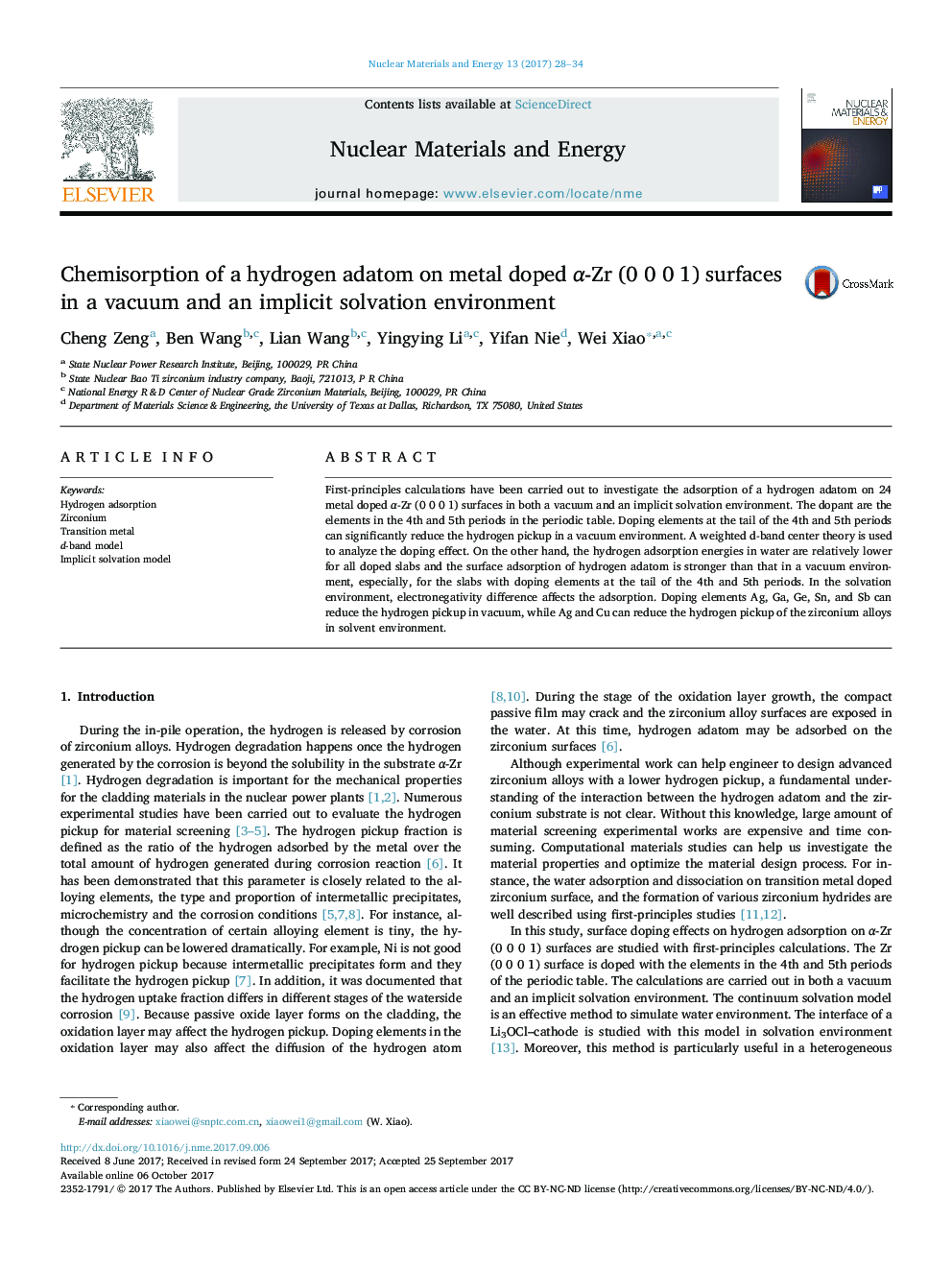| Article ID | Journal | Published Year | Pages | File Type |
|---|---|---|---|---|
| 5457085 | Nuclear Materials and Energy | 2017 | 7 Pages |
Abstract
First-principles calculations have been carried out to investigate the adsorption of a hydrogen adatom on 24 metal doped α-Zr (0 0 0 1) surfaces in both a vacuum and an implicit solvation environment. The dopant are the elements in the 4th and 5th periods in the periodic table. Doping elements at the tail of the 4th and 5th periods can significantly reduce the hydrogen pickup in a vacuum environment. A weighted d-band center theory is used to analyze the doping effect. On the other hand, the hydrogen adsorption energies in water are relatively lower for all doped slabs and the surface adsorption of hydrogen adatom is stronger than that in a vacuum environment, especially, for the slabs with doping elements at the tail of the 4th and 5th periods. In the solvation environment, electronegativity difference affects the adsorption. Doping elements Ag, Ga, Ge, Sn, and Sb can reduce the hydrogen pickup in vacuum, while Ag and Cu can reduce the hydrogen pickup of the zirconium alloys in solvent environment.
Related Topics
Physical Sciences and Engineering
Energy
Nuclear Energy and Engineering
Authors
Cheng Zeng, Ben Wang, Lian Wang, Yingying Li, Yifan Nie, Wei Xiao,
